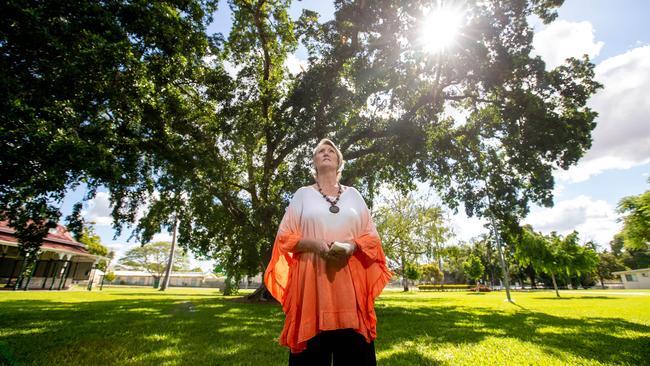Coronavirus: new hangout the key as disease fear drives action on bats
Charters Towers’ mysterious ‘bat flu’ has disappeared along with the noisy, pungent throng of red flying foxes.

Charters Towers’ mysterious “bat flu” has disappeared along with the noisy, pungent throng of red flying foxes hanging out in leafy Lissner Park, and not before time.
Growing evidence tracing the origin of the COVID-19 outbreak to bats in China has intensified concern in regional communities about the disease risk posed by flying foxes roosting in the hundreds of thousand near homes.
In the historic north Queensland goldmining centre west of Townsville, fed-up locals blamed their sore throats and coughs on the mess the bats had made of Lissner Park. “People got flu symptoms … a raspy throat and cough,” said former businesswoman Snow Hearne, who heads Charters Towers’ 700-strong flying fox action group. “Anyone with respiratory issues suffered. And then there’s the stench.”
But a change of approach is giving people the upper hand at long last: rather than just belt the bats with the big stick of noise, smoke and pyrotechnics to move them on, the carrot of better digs is working to the benefit of all.
In the sugar cane town of Ingham, an hour north of Townsville, teeming colonies of up to 200,000 flying foxes were sent packing three months ago to an out-of-the-way wetland reserve — and so far, they have stayed put.
The operation was carried out by Gold Coast contractor Biodiversity Australia. First, the company’s intelligence team went in to size up the targets hanging out in the Botanical Gardens and other sites, and to identify where to send them. The site in Tyto wetlands had everything a bat could want.
Operations manager Karl Robertson said the bats were roused soon after they landed at dawn with a booming hyper-spike noisemaker. Fireworks and smoke laid down in a directional pattern ushered them to their new home outside town.
After three days of this, the bats cottoned on. “We have a lot of semi-intelligent mammals to deal with, so you don’t want to fight with them … you want to work with them, not send them somewhere they don’t want to go,” Mr Robertson said.
Hinchinbrook Shire Mayor Ramon Jayo said teams followed up to shoo off “scouts” returning to the former nesting sites in town, ensuring the mass of flying foxes remained where they were. “It’s like building a road, you have to maintain it,” he said.
Charters Towers has gone even further, securing state government funding to construct a bat habitat 6km east of the town complete with a water supply. As soon as the coronavirus emergency allowed, the council would crack on with the relocation, said mayor Frank Beveridge. While Australian flying foxes and bats aren’t known to carry coronaviruses, Ms Hearne, 55, said locals were conscious the animals could infect people with deadly, rabies-like lyssavirus and were the source of the Hendra virus.
Recently, most of the little reds took off on their own accord, leaving about 3000 stay-put black flying foxes. Both species are protected under Queensland law. “I wish we could get rid of the rest of them,” Ms Hearne said.




To join the conversation, please log in. Don't have an account? Register
Join the conversation, you are commenting as Logout